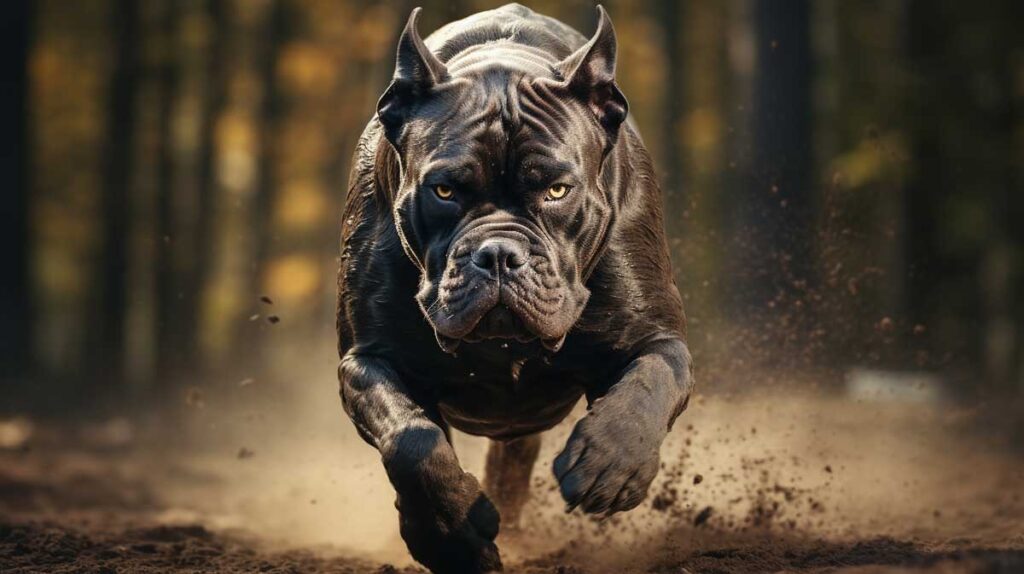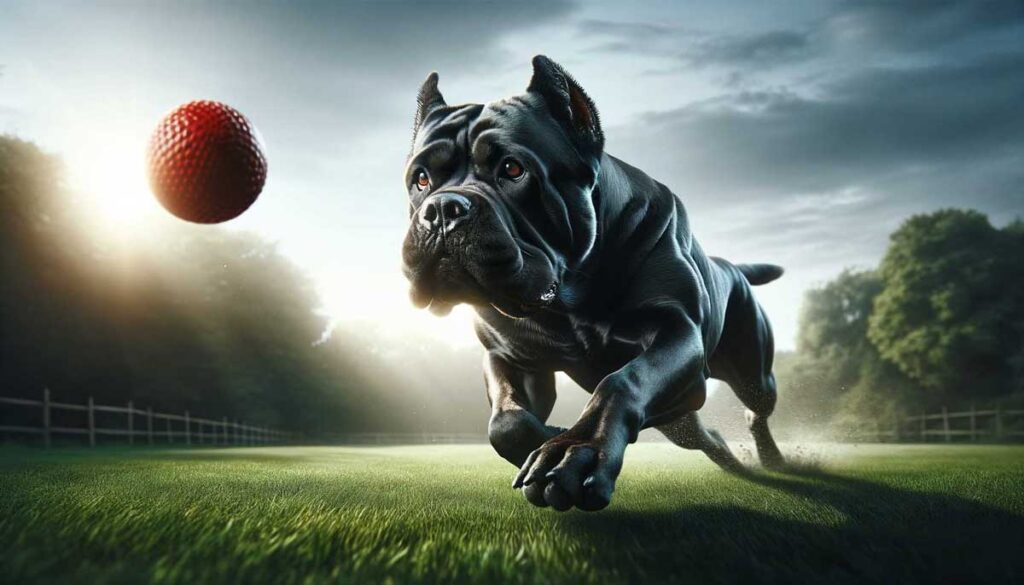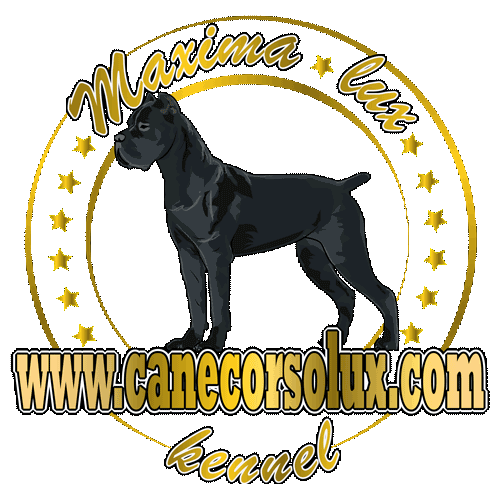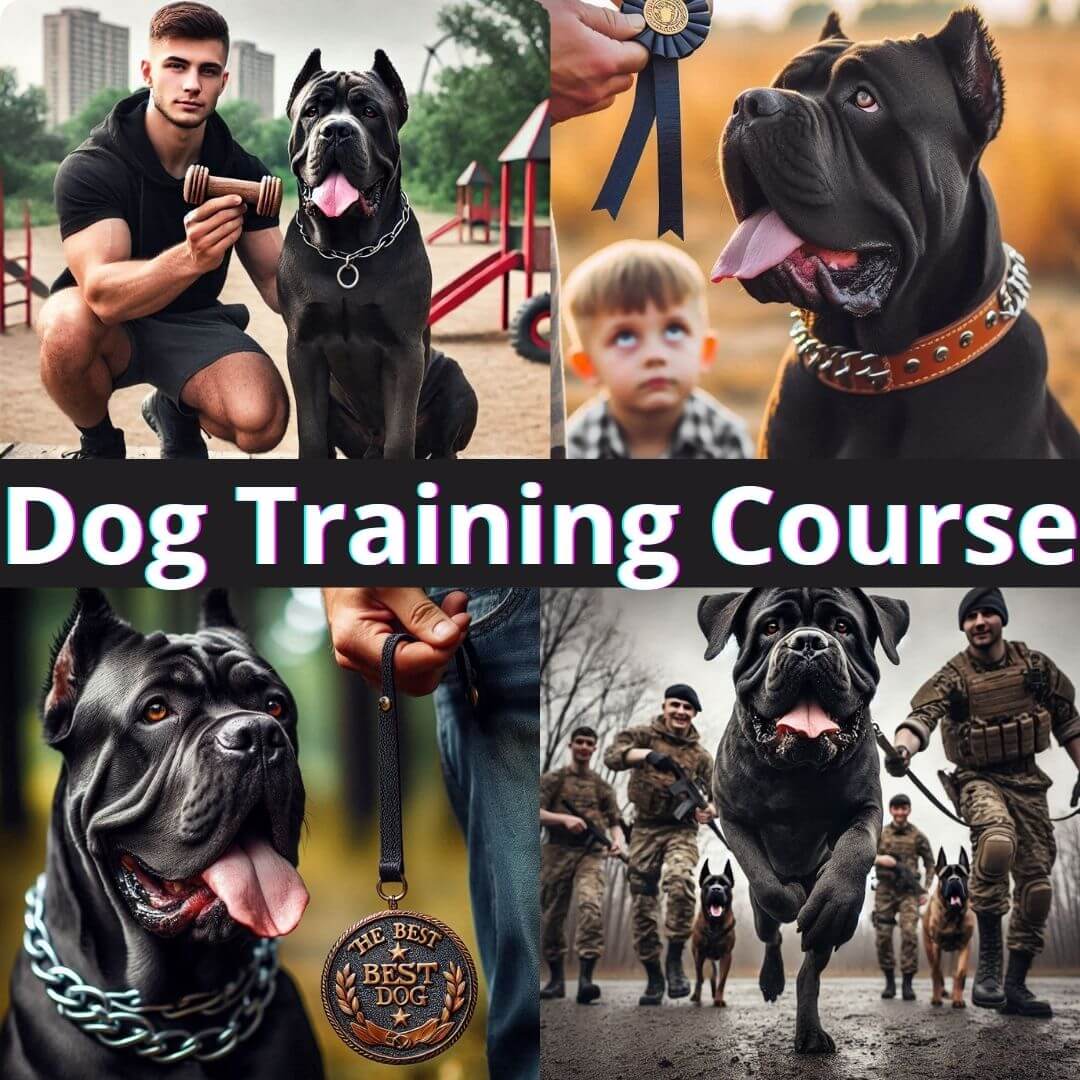Large and powerful Cane Corsos need daily exercise to stay fit and happy. They are energetic and good running or walking partners. Long walks or runs require planning and attention to their demands. This page discusses training, hydration, pacing, and equipment for long walks and runs with your Cane Corso. Follow these suggestions to keep your Cane Corso safe and healthy when outdoors with you.
The Cane Corso is a robust and athletic breed recognized for its endurance and muscular build. The Cane Corso was bred as a working dog in Italy and was used for jobs such as hunting, guarding, and herding. They are still used in comparable jobs today. Still, they are also popular household pets due to their loyal and affectionate temperament.
The Importance of Dog Exercise

Dogs require Exercise to maintain their physical and mental well-being. Regular exercise aids in:
• Prevent Obesity: Lack of Exercise and overfeeding can lead to obesity in dogs, leading to various health concerns such as joint difficulties, heart disease, and diabetes.
• Build and Maintain healthy Muscles and Bones: Exercise helps build and maintain healthy muscles and bones, especially in high-energy breeds like the Cane Corso.
Regular Exercise improves cardiovascular health by strengthening the heart and lungs, increasing circulation, and reducing blood pressure.
• Mental Stimulation: Exercise stimulates the mind and helps dogs avoid boredom and destructive behavior.
Regular Exercise is essential for high-energy breeds like the Cane Corso to avoid boredom and destructive behavior. These dogs may get restless and indulge in disruptive activities such as chewing, digging, or excessive barking if they do not exercise enough.
It is crucial to note that the quantity of Exercise a dog requires varies according to age, breed, size, and overall health.
In this post, we will look at the Cane Corso breed’s extraordinary endurance and offer advice on how to take them on long walks and runs. Understanding their experience as working dogs and their distinct physical traits can help you prepare for Exercise with your Cane Corso. Then, following our advice, you can keep your dog healthy and happy while engaging in outside activities.
Because the Cane Corso breed is noted for its incredible energy and athleticism, frequent Exercise is essential to their overall health and well-being. Cane Corsos, as a working breed, naturally need to be active and require enough physical activity to avoid boredom and destructive behavior. We can better identify the sort and amount of Exercise they require by investigating their working dog background and their physical attributes.
This article will go through how to take your Cane Corso on long walks and runs, including the optimum exercise time, equipment needed, and precautions to take. Following these guidelines will help to keep your Cane Corso healthy, happy, and active.
Understanding the Endurance of the Cane Corso
To comprehend the Cane Corso’s extraordinary endurance, we must first investigate its past as a working breed. The Cane Corso developed in Italy as a versatile working dog for property protection, hunting wild boar, and herding cattle. Their powerful physique, agile movement, and high energy level made them ideal for these challenging activities.
Cane Corsos naturally desire to be active due to their working experience, and they require plenty of physical activity to keep healthy and happy. Cane Corsos are noted for their intelligence, ability to adapt to diverse settings and physical qualities, making them good candidates for endurance activities such as long walks and marathons.
Understanding the history of the Cane Corso as a working breed is critical for providing adequate Exercise and preserving their overall health and well-being. We can develop a well-rounded workout plan that meets their demands by embracing their inherent propensity for physical activity.
Explanation of the Cane Corso’s history as a working breed
Cane Corso is an ancient Italian breed developed as a working dog. The Cane Corso’s name is derived from the Latin “Cohors,” which means “protector” or “guardian.” The breed was primarily used as a guard dog, property protector, and hunting companion.
Cane Corsos were popular in Italy for hunting wild boars, which required a dog with remarkable power, speed, and agility. Their robust physique, powerful jaws, and athletic skills made them ideal for this challenging duty. Cane Corsos were employed for herding livestock, guarding property, protecting their owners, and hunting.
After WWII, the breed was on the verge of extinction. Still, diligent breeders saved it and continued to maintain its working legacy. As a result, cane Corsos continue to succeed in various job roles today, including search and rescue, police work, and therapy dogs.
Understanding the Cane Corso’s history as a working breed is significant since it gives insight into their physical talents and a natural propensity for physical Exercise. Because of the breed’s background as a working dog, the dog has a natural need to be active and engaged, making regular Exercise a crucial component of their overall health and well-being.
Discussion of the physical qualities of the breed that contribute to their endurance
Cane Corsos are a huge and robust breed with excellent physical characteristics. These traits contribute to the breed’s incredible endurance and ability to perform physical work for long periods.
Musculature is one of the most important physical characteristics contributing to a Cane Corso’s endurance. The breed’s musculature is well-defined, particularly in the legs and shoulders. This musculature gives them strength and power, which allows them to travel fast and efficiently across great distances.
Cane Corsos are also recognized for their grace and agility. They have a natural agility that helps them to move smoothly over various terrains, making them ideal for sports like hiking and running.
Another feature that contributes to the breed’s endurance is its thick coat. Their coat provides insulation against the weather, helping them to effectively control their body temperature throughout prolonged durations of vigorous exertion.
Finally, Cane Corsos have a robust respiratory system that allows them to maintain high levels of physical activity for long periods. Their huge lungs and excellent breathing habits allow them to efficiently supply oxygen to their muscles, resulting in extended endurance.
Understanding the physical qualities contributing to Cane Corso’s endurance is essential for establishing a training plan that meets their needs. We can ensure that they keep good health and live an active and happy life by offering frequent Exercise suited to their physical abilities.

The significance of recognizing a dog’s exercise limits
While Exercise is a crucial aspect of a dog’s overall health and well-being, it’s important to remember that not all canines are the same. Each breed has distinct physical features, and it is critical to tailor workout routines to their talents.
Understanding one’s physical limits is very important for Cane Corsos. While the breed is noted for its endurance and athleticism, exceeding its physical limits can result in significant health consequences, such as joint difficulties and muscular injuries.
When designing an exercise plan for a Cane Corso, it is critical to consider age, weight, and overall health. Overexertion can be highly harmful to the dog’s body and may even result in long-term health problems.
Understanding a dog’s limits entails paying close attention to its exercise behavior. Exercise should be halted promptly if there are signs of tiredness or discomfort, such as excessive panting or limping.
By recognizing their physical limitations and observing their behavior during Exercise, we can guarantee that a Cane Corso receives the necessary amount of movement to maintain excellent health without putting undue strain on their body.
In conclusion, while Exercise is crucial for a dog’s health, it’s important to remember that each breed has its physical qualities and limitations. By approaching workout regimens with caution and mindfulness, we can guarantee that our Cane Corsos have happy and healthy lives.
Preparing Your Cane Corso for Long Walks and Runs
Taking your Cane Corso for lengthy walks and runs can be a fantastic way to bond with your pet while ensuring they get enough Exercise. However, it is critical to prepare correctly for these tasks.
Begin slowly.
If your Cane Corso isn’t used to long walks or runs, begin carefully and gradually increase their endurance. Sudden and severe activity can cause muscle and joint damage, and your pet may need time to acclimate to these activities.
Maintain Hydration
Staying hydrated during Exercise is critical for both humans and canines. Bring lots of water with you and make numerous stops to allow your Cane Corso to drink.
Select the Appropriate Time of the Day
Cane Corsos are heat sensitive, so avoid exercising them during the hottest parts of the day. Instead, go for walks or runs in the early morning or late evening when the weather is cooler.
Consider the Environment
When planning long walks or runs, take into account the terrain. Running on paved surfaces can tax a dog’s joints, and hiking in rugged terrain can be physically demanding. Choose activities based on your Cane Corso’s age, weight, and overall health.
Examine for Injuries
Check your Cane Corso for any injuries or abnormalities before and after Exercise. Look for any scrapes, bruises, or limping that could signal a problem. If you observe any problems, discontinue the activity immediately and seek veterinary care if necessary.
By adequately planning for lengthy walks and runs with your Cane Corso, you can ensure a safe and rewarding experience for you and your companion. Your Cane Corso can become a terrific workout companion and a loyal friend for years with proper training and care.
The Importance of Heating and Cooling
Warming up and cooling down are essential to any workout regimen, including long walks and runs with your Cane Corso. These activities assist your dog’s muscles and joints prepare for physical activity while lowering the risk of injury.
Getting Ready
Warming up your Cane Corso is vital before beginning any workout. Warming up your pet’s heart rate and body temperature increases, preparing their muscles and joints for physical Exercise. Warm-ups should take 5 to 10 minutes and might include mild exercises such as walking or running.
Cooling Off
It is critical to let your Cane Corso cool down after Exercise. Cooling down allows your pet’s heart rate and body temperature to return to normal. It prevents blood from accumulating in their legs. A cool-down should last 5 to 10 minutes and might include mild exercises such as walking or slow jogging.
The Advantages of Warming Up and Cooling Down
Warming up and cooling down your Cane Corso has various advantages, including:
• Injury prevention: A decent warm-up can help reduce the chance of muscular strains and joint injuries, while a suitable cool-down can help avoid blood pooling in the legs and lessen muscle discomfort.
• Improving performance: A proper warm-up can help your Cane Corso perform better by increasing their heart rate and body temperature, which leads to improved muscle function and flexibility.
• Improving recovery: A proper cool-down can help your Cane Corso recover faster by minimizing muscle soreness and stiffness.
You may assist your Cane Corso keep fit and injury-free while enjoying lengthy walks and runs by integrating warm-up and cool-down activities into their exercise routine.
How to Gradually Increase Your Dog’s Endurance
It takes time and cares to improve your Cane Corso’s endurance. Therefore, it is critical that they begin slowly and progressively increase the intensity and duration of their workout program. Here are some pointers to help you improve your pet’s endurance:
1. Begin slowly.
Begin with short walks or runs, gradually increasing the length and intensity over time. Begin with 10 to 15 minutes of Exercise daily, gradually increasing by 5 to 10 minutes each week.
2. Pay Attention to Your Dog’s Body
Observe your Cane Corso’s behavior during Exercise. Take a pause and let them rest if they appear tired or show signs of exhaustion, such as excessive panting or slowing down.
3. Allow Enough Rest
Ensure your Cane Corso gets ample rest and recovery time between workouts. Excessive Exercise might cause exhaustion and damage to your pet.
4. Include Variation
Incorporate a range of workouts, such as jogging, hiking, or swimming, into your Cane Corso regimen. This will keep kids interested and prevent boredom.
5. Nutritional Supplements
Give your Cane Corso a well-balanced food that fits their nutritional requirements. A proper diet may improve your pet’s general health and well-being by fueling its exercise regimen.
6. Check-ups regularly
Regular veterinary examinations are required to ensure your Cane Corso is healthy and fit for Exercise. Your veterinarian can also advise you on an appropriate exercise plan for your pet.
Following these guidelines, you may gradually increase your Cane Corso’s stamina and help them enjoy extended walks and runs without risk of injury or tiredness.
Choosing the necessary equipment for your dog, such as collars, harnesses, and leashes
Choosing the correct equipment for your Cane Corso is critical for their safety and comfort on lengthy walks and runs. Here are some pointers for selecting the right gear:
Collars
• Collars should fit snugly but not too tightly around the neck of your Cane Corso.
• Select a collar made of a strong material that can endure the straining and tugging that occurs during Exercise.
• Avoid using choke chains or prong collars on your dog since they can cause neck and throat damage.
Harnesses
• Harnesses are an excellent choice for dogs who tug on their leashes or have respiratory problems.
• Choose a harness that fits tightly but does not limit your dog’s movement or breathing.
• Select a robust harness that can withstand the strain of extended walks or runs.
Leashes
• Select a leash that is easy to control and comfortable to grasp.
• Consider a hands-free leash for extended walks or runs to allow you to move more freely while keeping your hands free.
• Avoid retractable leashes since they might be harmful if your dog suddenly pulls or lunges.
Overall, the equipment you purchase should be appropriate for your Cane Corso’s size and activity level, focusing on comfort and safety.
Long Walks and Runs with Your Cane Corso
Long walks and runs with your Cane Corso can be a terrific way to bond with your dog while keeping them healthy and happy. Here are some pointers to help you and your dog have a good time:
Begin slowly.
• If your Cane Corso is unfamiliar with long walks or runs, begin carefully and progressively increase the distance and intensity over time.
• This will help to prevent damage and gradually increase their endurance.
Keep Hydrated
• Bring lots of water for your dog and provide it periodically during breaks.
• Avoid giving them water right after Exercise because it may induce tummy problems.
Prepare Your Route
• Select a safe and entertaining path for you and your dog.
• Take into account the terrain and weather conditions to provide a comfortable and safe journey.
Take Rest Periods
• Stop frequently during long walks or sprints to allow your dog to recover and regain their breath.
• This is especially crucial on hot days or when exercising vigorously.
Keep an eye on your dog’s health.
• During Exercise, watch your Cane Corso’s respiration, temperament, and energy levels.
• Stop and take a break if they exhibit exhaustion or distress.
You can assist guarantee that your Cane Corso loves lengthy walks and runs with you and stays healthy and happy by following these guidelines.
Choosing the Best Exercise Environment for Your Dog
Choosing the right atmosphere for your Cane Corso’s Exercise is critical for their safety and enjoyment. Here are some things to think about while choosing a location:
Space
• Ensure that the space is large enough for your Cane Corso to move freely without risk of injury or distraction.
• A fenced-in area is a fantastic choice for providing a safe place for your dog to exercise.
Terrain
• The terrain should be appropriate for the physical ability and endurance level of your Cane Corso.
• Avoid regions with steep inclines or rugged terrain if your dog is unfamiliar with them or has joint problems.
Weather
• Avoid exercising in harsh weather circumstances such as high heat or low temperatures.
• If it’s hot, Exercise in a shaded area or during a cooler time of day.
• If it’s chilly outside, ensure your dog is properly dressed and minimize the exercise duration.
Distractions
• Keep your Cane Corso away from areas with substantial traffic, loud noises, or other distractions that could cause stress or anxiety.
• Select a location with few distractions for a tranquil and comfortable exercise setting.
Safety
• Always emphasize the safety of your Cane Corso by choosing areas free of hazards such as sharp objects, toxic plants, or other potential hazards.
By considering these aspects, you may select the best environment for your Cane Corso’s Exercise, promoting their safety, enjoyment, and overall health.
Tips for keeping an eye on your dog’s behavior and physical indications when exercising
Monitoring your Cane Corso’s behavior and physical cues during Exercise is critical to ensure their safety and well-being. Here are some pointers to remember:
• Keep an eye out for indications of exhaustion: Your dog may begin to slow down or lag, pant heavily, or lie down and refuse to continue. These are all indications that they are getting fatigued and need to rest.
• Keep an eye on their breathing: Pay attention to how your dog breathes during Exercise. It may be time to slow down or stop if they are panting excessively or appear to be trying to regain their breath.
• Examine their paws: During long walks and runs, your Cane Corso’s paws can sustain a lot of wear and tear. Check their paws for cuts, abrasions, and other signs of injury.
• Monitor the weather: Extreme heat or cold can harm dogs, so alter your exercise plan accordingly. For example, avoid exercising your dog during the hottest portions of the day, and always have water available.
• Pay attention to their behavior: Your dog may show signs of unhappiness with the environment or the activity. They may, for example, try to draw away or exhibit signs of uneasiness. In these instances, it may be appropriate to call it a day.
By keeping an eye on your Cane Corso’s behavior and bodily cues during Exercise, you can keep them safe and healthy while enjoying extended walks and runs.
Maintaining Your Dog’s Hydration and Nutrition During Exercise
One of the most crucial components of training your Cane Corso is to keep them hydrated and fed throughout the activity. Dogs, like humans, require regular hydration and diet to maintain endurance and avoid potential health problems.
Here are some suggestions for keeping your Cane Corso hydrated and fed while exercising:
1. Bring Plenty of Water
Bring plenty of water for your dog during long walks or runs. Dogs can quickly get dehydrated, especially during hot weather or strenuous Exercise. Consider utilizing a portable water bottle with a built-in bowl or a hydration pack attached to your dog’s harness.
2. Provide water regularly.
Even if your dog is not thirsty, provide water frequently throughout the Exercise. Because dogs may not always display signs of thirst, it is critical to urge them to drink water regularly. A decent rule of thumb is to offer water every 15-20 minutes.
3. Think about electrolyte supplements.
Consider adding an electrolyte supplement to your dog’s water during vigorous Exercise. These supplements can aid in the replenishment of lost nutrients as well as the improvement of hydration.
4. Pack Snacks
Bring food for your dog to consume during breaks in activity. Snacks such as freeze-dried meat or fruits and vegetables can supply essential nutrients and energy.
5. Keep an eye on your dog’s eating habits.
Before exercising, make sure your Cane Corso has eaten adequately. Feeding them a substantial lunch right before exercising might bring pain and perhaps severe problems. Also, keep an eye on their feeding patterns after Exercise, as some dogs may be reluctant to eat right after Exercise.
Following these guidelines, you can help your Cane Corso stay hydrated and nourished during Exercise. This will allow them to retain their endurance and overall health.
Conclusion
Exercise is an essential component of a Cane Corso’s life. It plays a vital role in their overall health and well-being. Therefore, it is critical to understand the breed’s history as a working dog and the physical qualities that contribute to its endurance.
To avoid overexertion and injury, being aware of your dog’s limits and needs during Exercise is critical. Always warm up and cool down, gradually increase their endurance, choose the appropriate equipment, observe their behavior and physical cues, and supply adequate hydration and nutrition.
You can keep your Cane Corso healthy, happy, and contented by following these advices and rules. So, don’t be afraid to get out there and enjoy the beautiful outdoors with your canine companion!
Regular Exercise is crucial for all dogs’ physical and emotional health, and Cane Corsos are no exception. They have intense endurance levels and require daily activity to keep fit and happy as a breed with a history of working and serving as guardians. Exercise promotes cardiovascular health, muscle development, and overall strength while helping to prevent obesity, joint difficulties, and other health issues.
Exercise provides cerebral stimulation and physical health advantages, reducing stress and anxiety while improving general mood and behavior. In addition, Exercise can assist in minimizing disruptive behavior like gnawing and digging and promote improved sleep patterns, lowering the risk of behavioral issues linked with insufficient rest.
Finally, regular Exercise is critical for Cane Corsos’ physical and mental well-being.
Exercise is crucial not just for your Cane Corso’s physical health but also for their emotional well-being. Cane Corsos, as a highly energetic and intelligent breed, require frequent opportunities to release energy and stimulate their minds through Exercise.
It is all too easy to find reasons not to exercise your dog, such as being too busy or exhausted. Making an effort to prioritize your dog’s exercise demands, on the other hand, can benefit both you and your canine partner.
So, get your Cane Corso out there and enjoy some exercise! Whether it’s a little stroll, a long hike, or a jog around the block, your dog will appreciate the opportunity to get moving and spend valuable time with you. Always be aware of your dog’s limits and needs, and speak with a veterinarian if you are concerned about their capacity to exercise.

